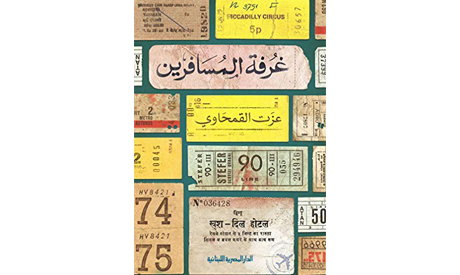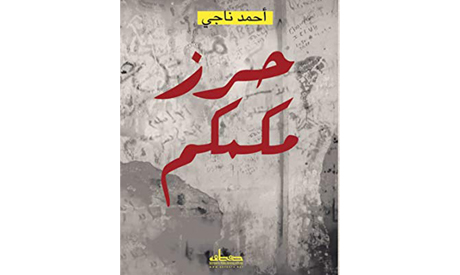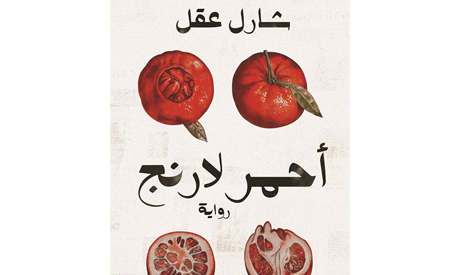Our Nile
In response to the recent failure of negotiations on the Ethiopian Renaissance Dam, Nader Habib looks at two 1993 General Egyptian Book Organisation publications on the connection between the Nile and its ancient gift.
At 6740 km the Nile is not only the longest river in the world. In Egypt it also used to have divine status as Hapi, who received libations during the flood season – a ritual preserved to this day in the form of the national Flooding of the Nile holiday, often celebrated with a boat trip. The first attempt to reach its source took place in BC 457 when Herodotus, who famously called Egypt the gift of the Nile, reached the Cataracts.
In a book entitled simply The Nile, Mohamed Gamaleddin Al-Fendi recounts the earliest stories of Nile flooding, referring to the seven-year drought in the story of the prophet Yusuf as recounted by the Quran. He also recounts the story of the Iraq-born polymath Al-Hassan ibn Al-Haytham, who had planned on building a dam near Aswan to control the flow of water through the years until he examined the area in person and concluded that it would be an impractical task. Al-Fendi also discusses the earliest map of the Nile by the Abbasid polymath Al-Khawarizmi, which remained the extent of geographic knowledge until modern times when, under Muhammad Ali’s reign, his son Ismail Pasha led an expedition to where the While Nile met the Blue Nile in 1820-1822.
In his book The River Nile: Its Origins and the Use of Its Waters Past and Future, Rushdie Said explains that Ethiopia controls some 84 percent of the Nile’s waters, being the site of all three of its source tributaries, adding that it has not developed its natural resources. Yet Ethiopia, he adds, is among a handful of African countries to have studied its rivers closely, drafting detailed maps of them through the American Land Reclamation Office between 1959 and 1964. Following the construction of the Aswan High Dam – completed in 1970 – Ethiopia explored the possibility of developing the Blue Nile basin. Following a meticulous and thorough study employing 59 observation points the office recommended constructing four large and several more small dams, a project deemed too expensive for the 20th century.

Ezzat Al-Kamhawi, Ghorfet Al-Mosafreen (Passengers’ Room), The Egyptian-Lebanese Publishing House, 2020, pp239
This is a book of reflections on travel in the broadest sense. It is more than just a travel writing. Ezzat Al-Kamhawi who embarked on his career in writing in 1992 with his debut Madinat Al-Ladha (Pleasure City), combines his passion for writing and his passion for reading in this book, recalling the travels of The Thousand and One Nights. The book embraces the details of journeys starting from the bags that passengers carry, the types of travellers, the airport, its duty free shops and its bookshops and what a passenger can expect to find there, moving onto the hotels where a traveller might stay and how these details create a new experience for any person. The book takes stock of the various experiences involved in travelling and reading, and suggests ways to reach new levels and break new limits.
Al-Kamhawi is an Egyptian novelist and journalist who was born in 1961, and graduated from Cairo University’s Faculty of Mass Communications in 1983. He has published 14 books the latest of which was Ma Raah Sami Yacoub (What Sami Yacoub Saw) in 2019. In 2012, Al-Kamhawi received the Naguib Mahfouz Medal for Literature for his House of the Wolf.

Ahmed Naji, Herz Mekamkem: Al-Qeraa wal Kettaba Dakhel Al-Segn (Rotten Evidence: Reading and Writing in Prison), Sefsafa Publishing House, 2020, pp263
This a non-fiction book by novelist and journalist Ahmed Naji, coherently recalling his harsh experience in prison after being convicted of violating public morality following the publication of a chapter of his novel Estekhdam Al-Haya (The Use of Life) in a state magazine. Naji chose to start his book at the police station, where he was detained for days sleeping on the floor before the real journey began. Arriving in prison and waiting for the paper work entry process that involved being kept with nothing but his underwear, while some of his books were prevented from going inside with him: Patrick Modiano’s Des inconnues (Strangers) and Almog Behar’s Tchahle Vehezkel (Rachel and Ezekiel), translated by Nael Al-Toukhi, but the officer left him keep his black leather notebook after finding out he was a writer. Once in prison, he had to adapt to the new life and so reading and writing became one of his solutions. This book is a depiction of how Naji interpreted the prison experience through the old found book in the prison library Taha Hussein’s Together with Abi El Alaa in his Prison (1935), ironically the book seemed right for Naji at the time and the mutual raised questions of Naji and Hussein regarding whether it’s worth it to make such a sacrifice to write and spend your days in prison?
Naji proceeds to his daily routine in prison, describing nightlife in the cells, hot weather when the electricity is off and the emotional difficulty of loved ones’ visits.
Born in Mansoura in 1985, Naji is a US-based Egyptian writer and former journalist at the literary weekly Akhbar Al-Adab. His books include Rogers (2007), Seven Lessons Learned from Ahmed Mekki (2009) and Loghz Al-Mahragan Al-Mashtour (The Mystery of the Broken Mahragan, 2017). His latest book is Wal Nomour Li Hograti (And Tigers to My Room, 2020).

Abdallah Al-Nasser, Qahwa Nama: Marwiyat Al-Qahwa wal Nour (The Book of Coffee: Tales of Coffee and Light), Rewayat Publishing House/ Al-Karma Publishing House, 2020, pp221
Saudi author Abdallah Al-Nasser devotes this book to tracing the history of coffee and how coffee was a key player in history. He starts with its purported discovery by a chemist and Sufi adherent of the the Shazli tariqa in the Arabian Peninsula, named Jamaluddin, who realised that it could give religious devotees the stamina to stay awake and continue with their prayers for longer periods of time. Despite the fact that the discovery of coffee was attributed to religious men, it later became a revolutionary drink and inevitably also a symbol of capitalism, on other occasions also helping soldiers at war.
The first chapter of Al-Nasser’s book is a philosophical introduction recounting the adventures of those who first found the tastiest coffee beans and the sacrifices they made, climbing mountains, devising tests and learning the language of the monks who live there. In the second chapter, “Gulliver’s Bag”, the writer finds a bag that was left on the train in London belonging to man named Gulliver, which happened to contain a vast number of documents on coffee and drafts of a project about it. Al-Nasser says he made copies of everything in order to use it in his own book before returning the bag to its owner.
The author relates the European renaissance to coffee, explaining how Europeans were used to drinking alcohol in the morning and the evening before they were introduced to the new drink. On the other hand, the Turks used to monopolise the cultivation of coffee, exporting it to Europe in such a way that it cannot to be cultivated until a Dutch sailor managed to sneak a coffee tree from the Port of Aden into Europe in 1616. The author also mentions the Mameluke Sultan Qansuh Al-Ghuri’s decree in 1511 to prohibit coffee in Egypt and Saudi Arabia and that decree included closing down all the coffee shops and punishing anyone found drinking coffee anywhere. Al-Nasser thus manages to connect coffee to almost every aspect of human history from war to music, law and religion.
Born in 1951, Abdallah Al-Nasser is a Saudi author, poet, translator and journalist.

Charles Akl, Ahmar Lareng (Blood Oranges), Al-Karma Publishing House, 2020, pp341
The hero of this novel is a man torn between careers in writing and music. It mixes surrealism with realism and acts as a virtual guide to the kind of jazz that flourished at the beginning of the 2000s in a postmodernist wave of music in Egypt. Launched by a group of experimental artists, this music ended up being lost in the gap that resulted from the transition from an analog to a digital music industry. It also offers a deep insight into the art scene in Egypt and the hidden talents and exceptional phenomena it contains, touching on many arts including belly dancing. It also illustrates the obstacles and predicaments of that scene and ways to overcome such problems, demonstrating the faith that it can work miracles.
Charles Akl is an Alexandrian author who gave up a career in engineering to write, publishing his first book, Food for the Copt – which discusses the Coptic Christian diet in Egypt during the year’s various fasts, using food as a way into religion and culture, sociology and psychology – in 2017.

Salma Al-Tarzi, Mohawla Li Tazakor Waghi (An Attempt to Remember My Face), Al-Mashaa Al-Ibda3y, 2019, pp130
Filmmaker Salma Al-Tarzi chose to write for once, and the result is hard to categorise. It is neither a novel nor a graphic novel even though it has less text than imagery. It is also not poetry, and it is written entirely in Egyptian Arabic dialect. It is made up of drawings and illustrations as well as text, and relies on graphic and typographic innovation to approach the topic of the death of Al-Tarzi’s mother at a relatively early age. Al-Tarzi reflects on the loss of her mother, their life as a family including all the small details, looking into the hidden traits of every family member. She recalls her childhood, her brother, her parents and their traditions in the house. She also describes her mother’s chronic asthma and how they were used to it as a constant occasion. Al-Tarzi’s predicament lies in the draw of death and how, her complex feelings about it and the alienation she feels as a result of her obsession with it. She even shares her thorough assessment of various methods of suicide, which she compares for brutality as a positive characteristic as much as anything.
Al-Tarzi courageously describes the last days of her paternal grandmother Yoli, for whom she was caring, how persistently she clung to life and how little Al-Tarzi could understand that considering the state she was in, incapable of doing anything for herself and completely dependent on Al-Tarzi. The author describes how tired of caring for her grandmother, she would fantasise about smothering her with a pillow to put her out of her misery. She also recalls Yoli during her – Al-Tarzi’s – childhood, how angry she would with her short curly hair and her un-girly look, obsessing about straightening her hair. Al-Tarzi also tackles the January Revolution, in which she was a keen participant, head on. She has some fascinating insights on the connection between protest and death, and her own mixed emotions on such occasions as the rather bloddy Mohamed Mahmoud clashes with the police. In the end she produces a document on loss and despair but also one of self-discovery and how someone can be constantly barely a step away from death but continue choosing to live still.
Salma Al-Tarzi is an Egyptian filmmaker. Born in 1978, she studied at the High Cinema Institute and started her career as an assistant director on films like Al-Lembi and Eli Bali Balak. She made her debut documentary Enta Aref Lih? (You Know Why?), a journey into the lives of girls who work in TV commercials, in 2004. She also made a documentary on the Mahraganat music genre in Eli Yiheb Rabena Yerfaa Eido Fo (If you loves God raise your hand) in 2013.

Nora Nagy, Attiaf Kamilia (Kamilia’s Shades), Al-Shorouk Publishing House, 2019, pp178
The heroine of this book, Kamilia, is named after her aunt who disappeared into a mirror after cutting her own long braid of grey hair with a pair of scissors when she – the heroine – was 12. The family fails to find said aunt but refuse to believe little Kamilia, who is consumed by the incident and her aunt’s diary, which she finds abandoned a corner of the house. This diary becomes not only a revelation but a guide, informing Kamilia’s relationship with the outside world and self-discovery, and opening up new horizons to her, as well as helping her understand her family on a new level. Slowly she learns about the shades and faces of her aunt, her weakness, her dreams and how love changed her life.
Nora Nagy is an Egyptian author who graduated from the Faculty of Fine Arts in 1987. She is also a journalist who publishes articles on the Noon website and in Fonoun (Arts) magazine. Before Kamilia’s Shades, she published three novels: Pana (2014), Al-Gedar (The Wall, 2016) and Banat Al-Basha (The Pasha’s Daughters, 2017). The latter was nominated for a Sawiris Award in 2018.
*A version of this article appears in print in the 19 March, 2020 edition of Al-Ahram Weekly
Short link: